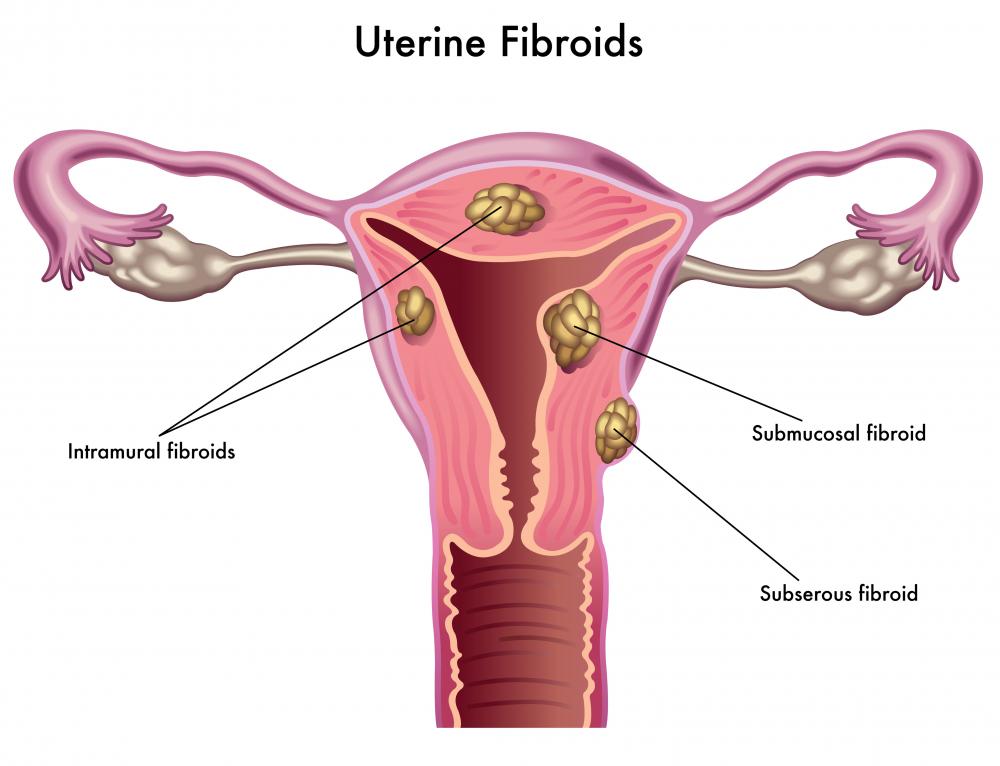At WiseGEEK, we're committed to delivering accurate, trustworthy information. Our expert-authored content is rigorously fact-checked and sourced from credible authorities. Discover how we uphold the highest standards in providing you with reliable knowledge.
What is the Connection Between Fibroids and Endometriosis?
Fibroids and endometriosis are medical conditions that can co-exist in the same patient or occur independent of each other. When the two conditions are present at the same time, they can be the cause of the patient's complaints of menstrual irregularities and pain or pressure in the pelvic region. Approximately 15 percent of patients diagnosed with endometriosis also have fibroids or another medical condition affecting the female reproductive organs.
Both fibroids and endometriosis have certain characteristics in common. These conditions are most commonly diagnosed in women of childbearing years. Each one has the potential to interfere with, or even prevent, a woman's ability to conceive and carry a pregnancy to term. They can also be at the root of abnormal menstrual periods.

These medical concerns also both involve tissue growing in a location where it is not normally found. In the case of endometriosis, the woman has cells normally found in the lining of the uterus, or endometrium, in other parts of her pelvis. The tissue can attach itself to the ovaries or the Fallopian tubes. In rare cases, the endometrium can be found on the bowels, bladder, the appendix or attached to Caesarean section or laparoscopy scars.

Fibroids are non-malignant tumors of the uterus. They can attach to the interior wall of the uterus or develop within the wall itself. In some cases, a fibroid can look like a stalk growing off the uterus. These tumors are made up of muscle tissue, and cause heavy or irregular periods.
Symptoms of fibroids and endometriosis can be similar for some women. Both conditions can cause pelvic pain, although it is possible for a woman to have endometriosis and not experience any symptoms. In the case of endometriosis, the discomfort may be felt in the lower back as well as the abdomen.

Difficulty connected with using the washroom may also be related to fibroids and endometriosis. Both of these conditions can cause rectal pressure, leading to constipation. In the case of endometriosis, this symptom may become more pronounced during menstruation.
Fertility issues are also common to both of these medical conditions. In some cases, the reason for consulting a physician is infertility. Only after trying to conceive for several months without success will a woman and her partner seek medical help. The presence of fibroids and endometriosis, or one of these conditions, may only be discovered during fertility testing.
AS FEATURED ON:
AS FEATURED ON:
















Discussion Comments
Fibroids are very common and most women never realize they have them. In instances where fibroids do cause problems women report the following common symptoms: periods lasting seven days or more, heavy menstral bleeding, back aches and leg pain, frequent urination, a feeling of pressure in the pelvis and constipation.
Post your comments